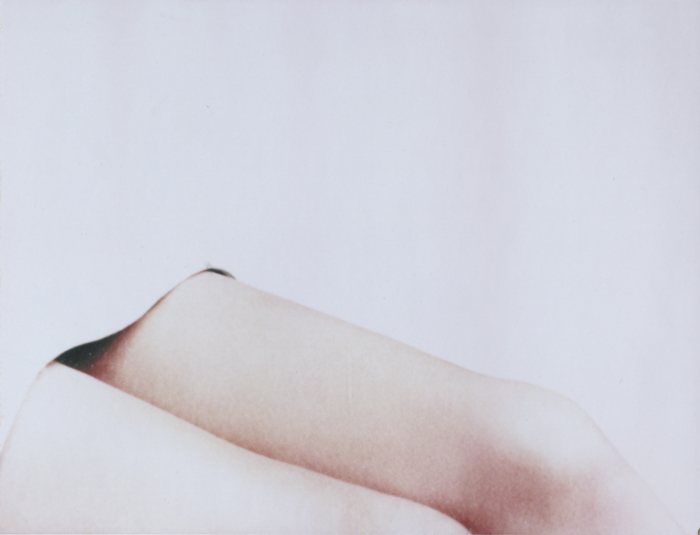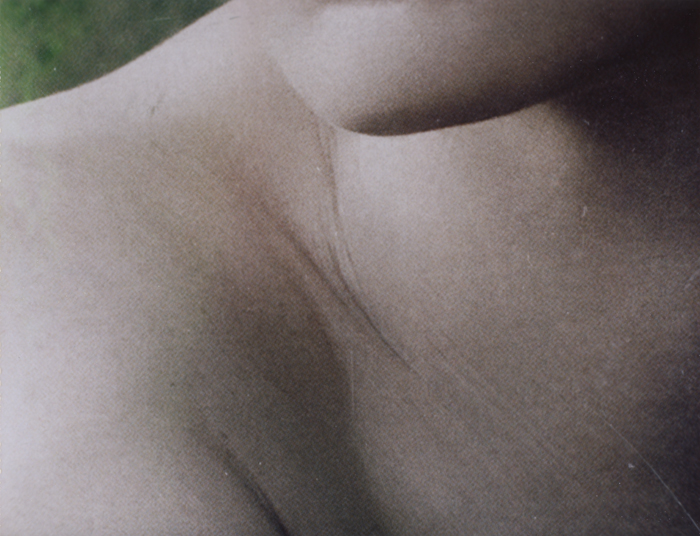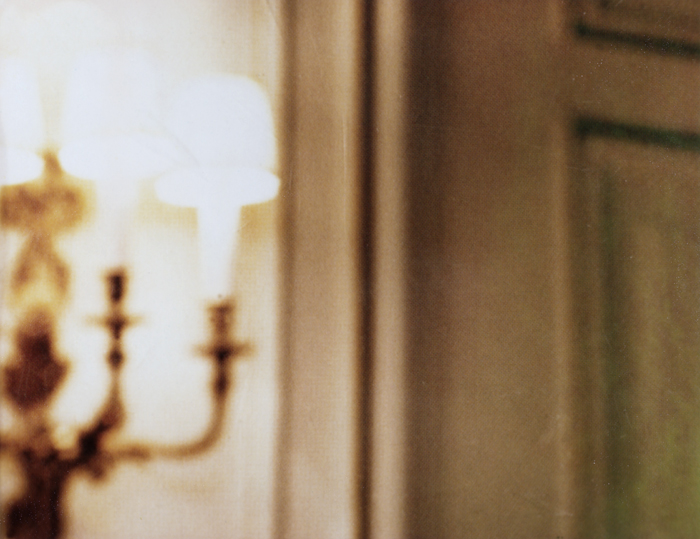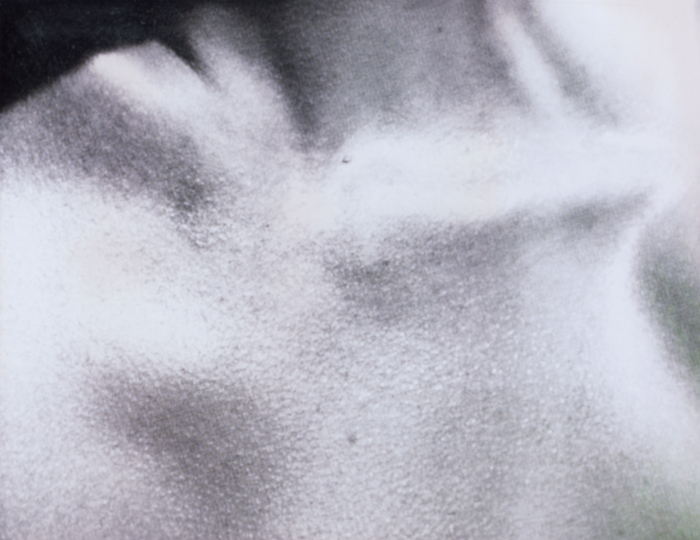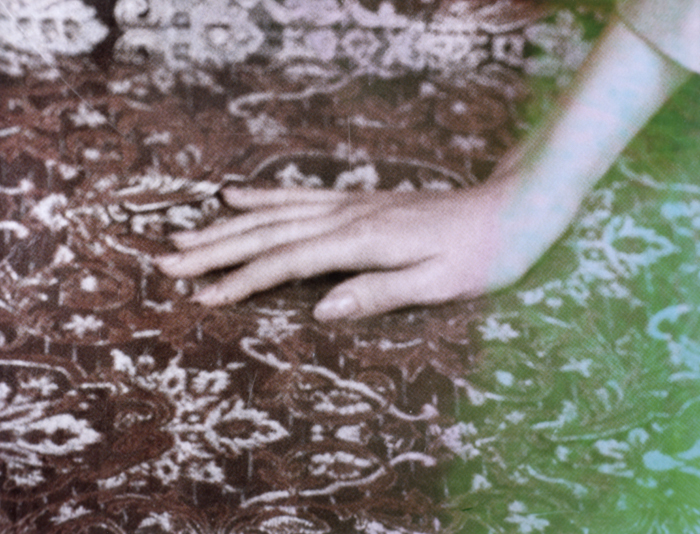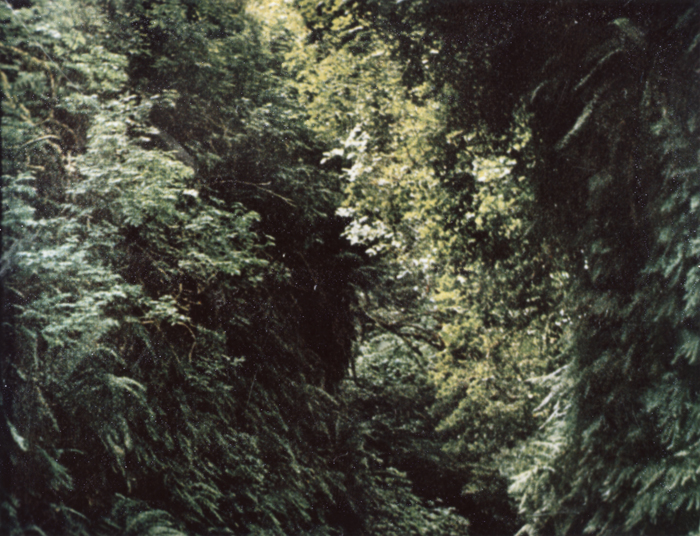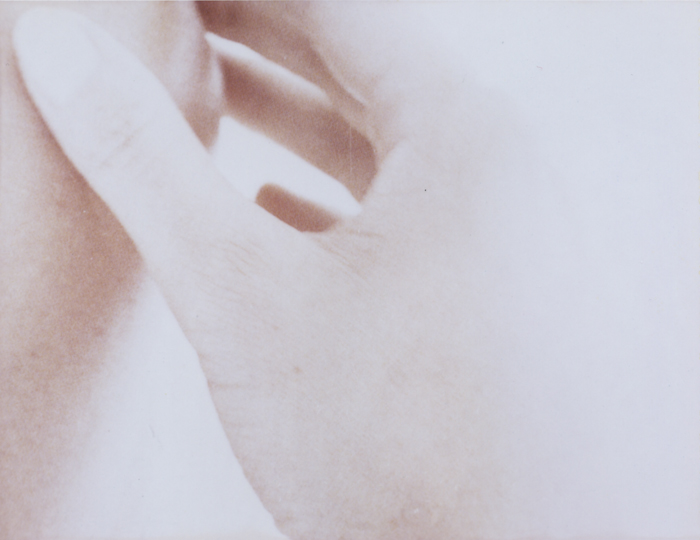In her recent body of work, Equivalents, Seattle-based Serrah Russell rephotographs details from advertisements and editorials within fashion, lifestyle and nature magazines, giving them new meaning by encouraging viewers to rethink how we "see." She focuses on the native photographs' dead space and superficially less important details in body parts, foliage and domestic interiors, and uses them to produce new images that serve as textural landscapes and emotional narratives.
"The source image often is intended to sell a product or a brand," says Russell, "so if even the fragment continues to do that, then that is not an image I want to rephotograph. I seek image fragments that can create some type of narrative, perhaps about beauty, sadness, experience, memory, individual, landscape, environment. "
Russell uses a Polaroid DayLab Copy Systems Pro camera -- which is essentially a scanner that uses Polaroid film -- to maintain the original scale of the image, allowing her to zero in on specific details without alteration. "I like the physicality that the Polaroid image provides as an art object. The images are transitioning from one printed image to another printed image and maintains the feeling of fragmentation."
Although the resulting pictures are clearly abstractions, they retain enough original details - the bridge of a nose, the space where hairline meets forehead, a closeup of a hand leaning on an old rug - to ground them, ever so slightly, to their original material. Russell's use of the Polaroid to carefully crop, isolate, enlarge and soften these secondary details, ultimately turns images that at once may have existed to sell products, sexuality, or constructed experiences of the natural world into thoughtful meditations on intimacy.
Serrah Russell received her BFA in photography at the University of Washington. She works and lives in Seattle where she is also co-founder of Violet Strays, an online curatorial project with an emphasis on temporality and experimentation.

